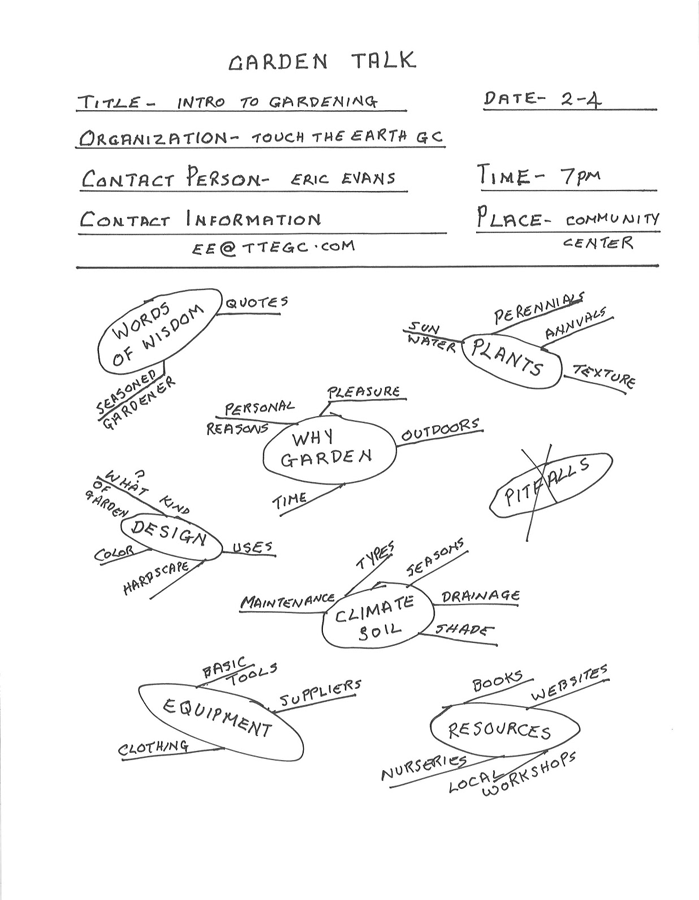Deb was a seasoned gardener who agreed to give a 90 minute talk on “Gardening for Beginners” at a local Gardening Club. She procrastinated in starting to draft her talk because she didn’t know where to begin. She knew a lot about the topic yet was stressed about what to include and what to leave out.
She had learned how to use the visual FLEX strategy of a Balloon Map to create a visual framework to see the big picture first then the details. She decided to try it on her talk.
Using a small whiteboard in her kitchen, on the top ⅓, Deb wrote the title of her talk; the name of the garden club; the date, time and place; and the name of the contact person and their email.
In the lower ⅔, she wrote topics – randomly, ANYWHERE. Then she circled each topic, turning it into a balloon. She looked at those balloons and saw associational links connecting them. Within the links, a prioritized sequence emerged. The topic of Pitfalls was too big for this introduction to gardening so she crossed it out. She numbered each topic balloon. The central framework for her talk was laid out. Now it looked easy. She was relieved.

Deb’s Balloon Map gave her a circular visual framework – no columns. It energized her to get into action and stop procrastinating. She stopped worrying about what to include. As she thought about her key topics over the next few days she added subtopics and actions to each one. Even crossed out a topic. When she faced her eager audience she was confident. Her talk was a success and she had fun in the process.
Balloon Maps can be used for a variety of applications – to organize a paper, speech, school assignment or meeting agenda.They can be created using a whiteboard, electronic device, paper, PowerPoint. The number of balloons varies depending on the size and complexity of the project.
The process of creating a Balloon Map is the same:
- Set the CONTEXT for your project – at the top of your paper/page/whiteboard/screen write down the name of your project, what/who it’s for, the contact person with their contact information, and the due date and time (if applicable).
- CAPTURE the core ideas (topics) and components at the beginning of your project when you have a lot of energy and enthusiasm.
- PURPOSELY write down your topics ANYWHERE.
- CIRCLE the key topics, creating balloons.
- Write subtopics and ACTIONS around each balloon.
- CROSS OUT what you don’t need.
- NUMBER them in the order that makes sense to you.

